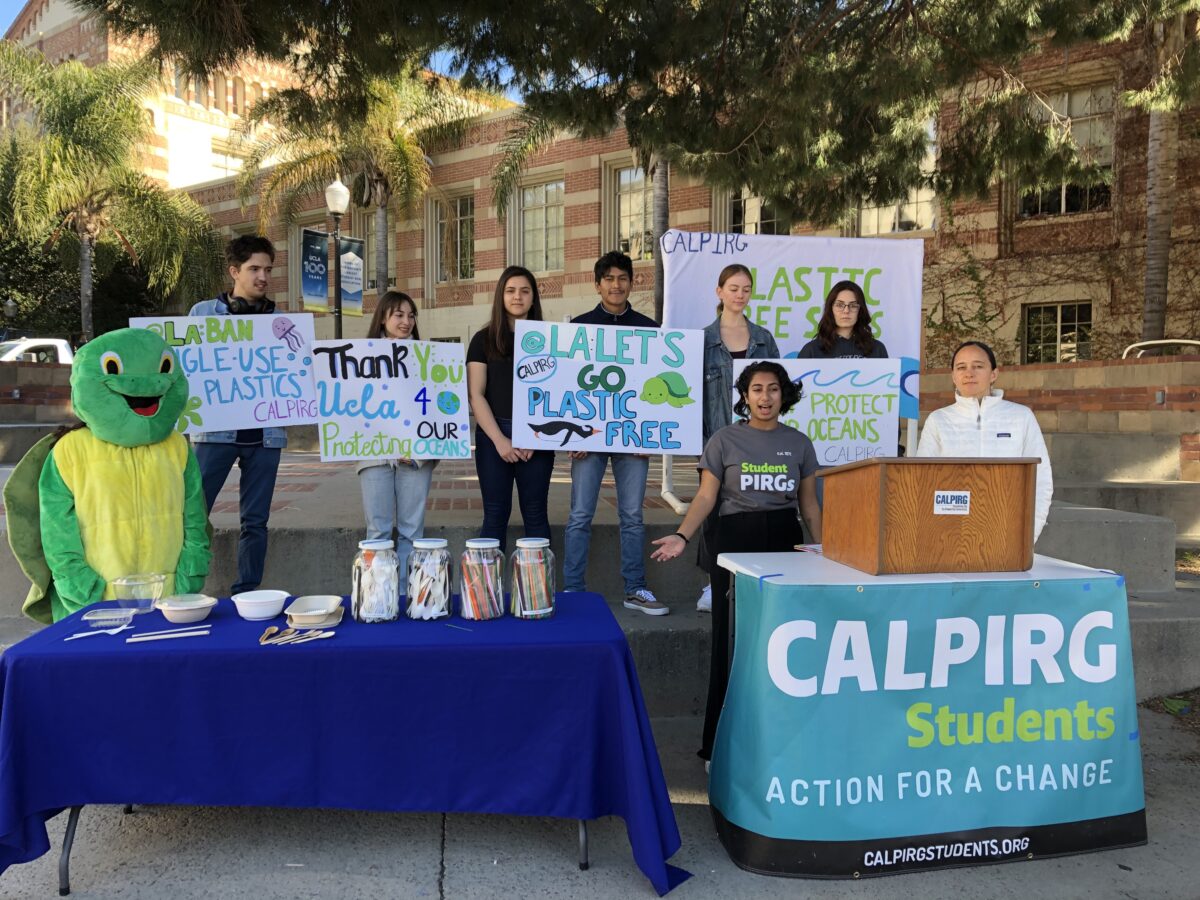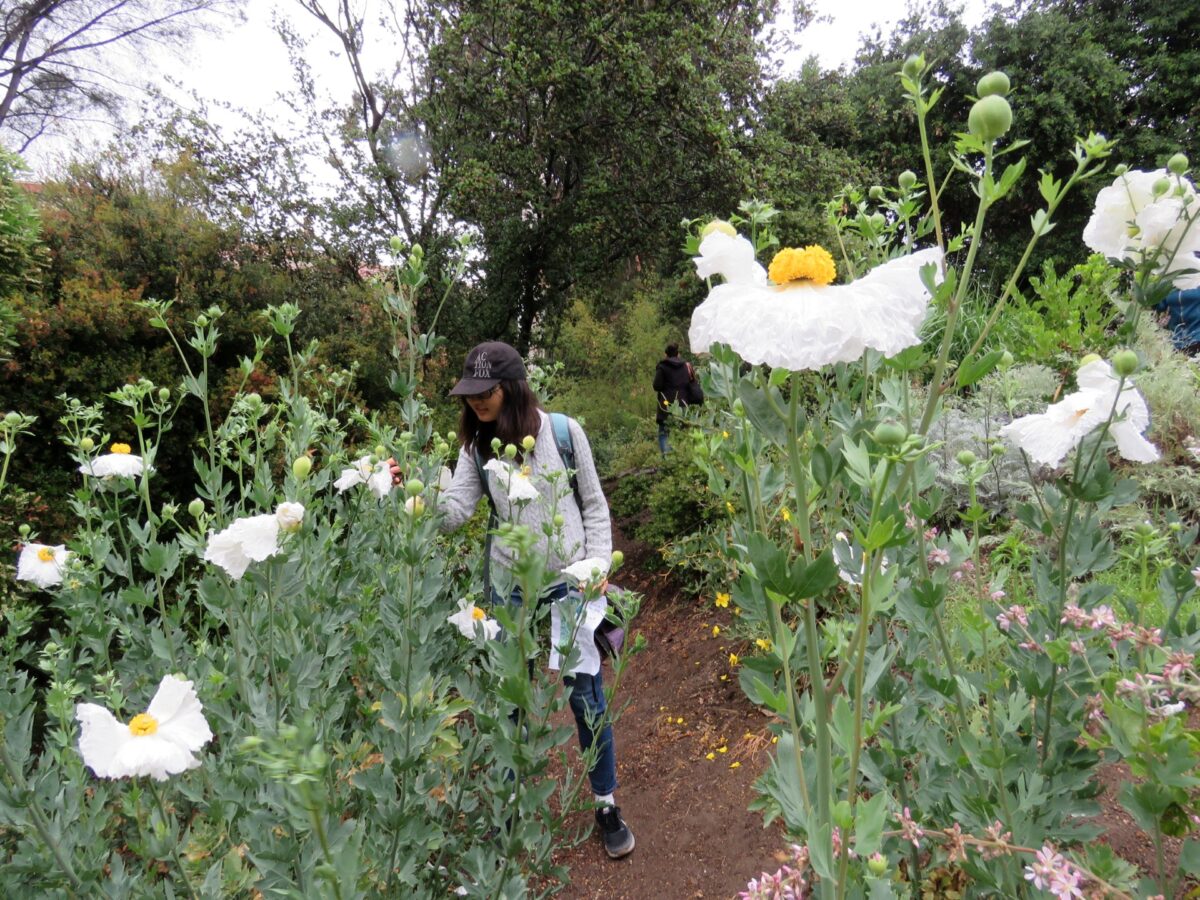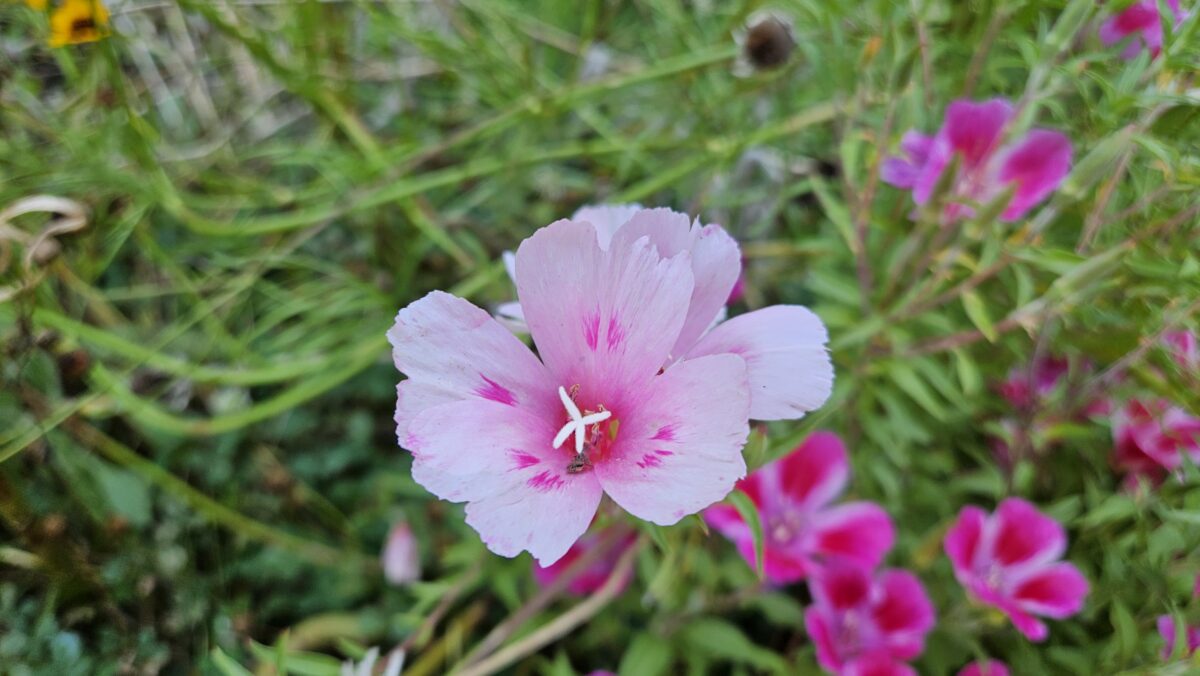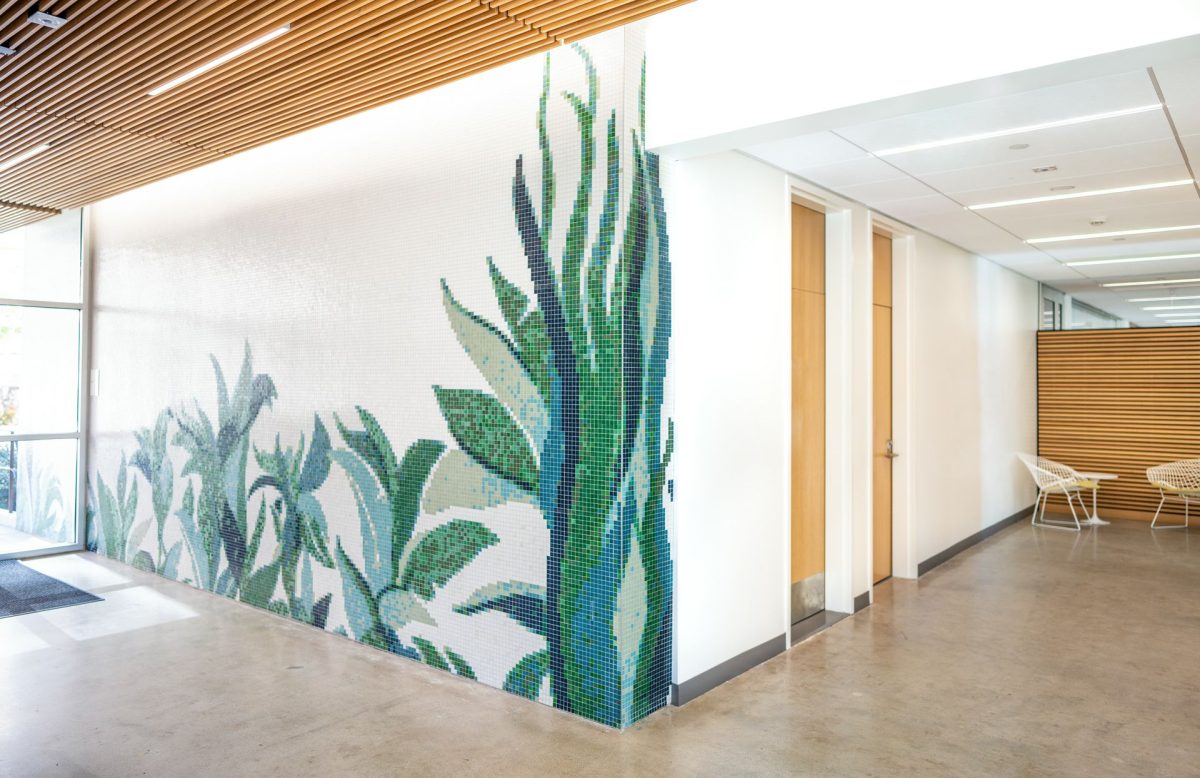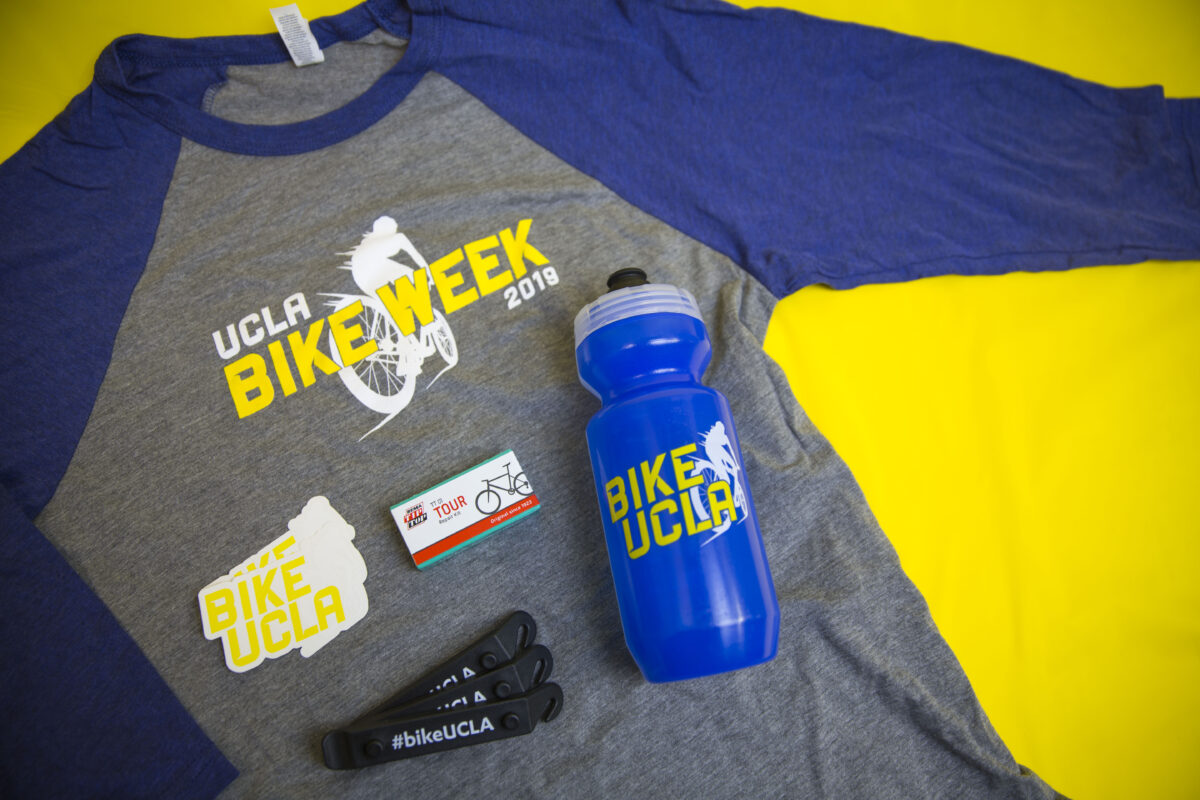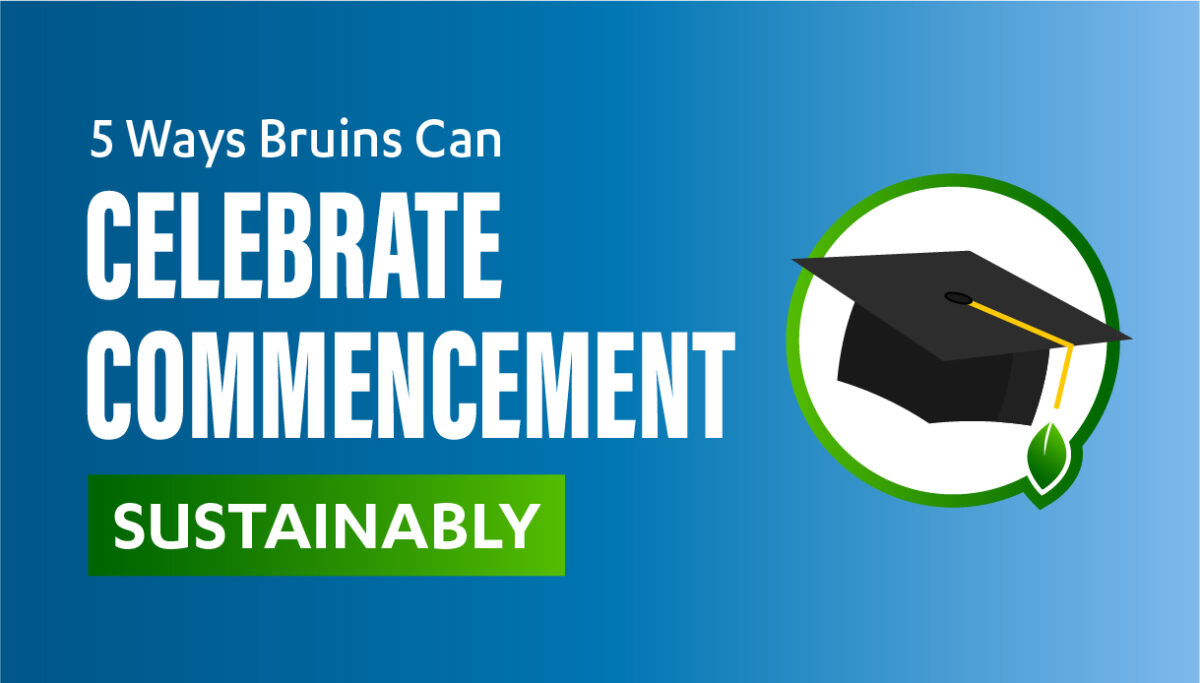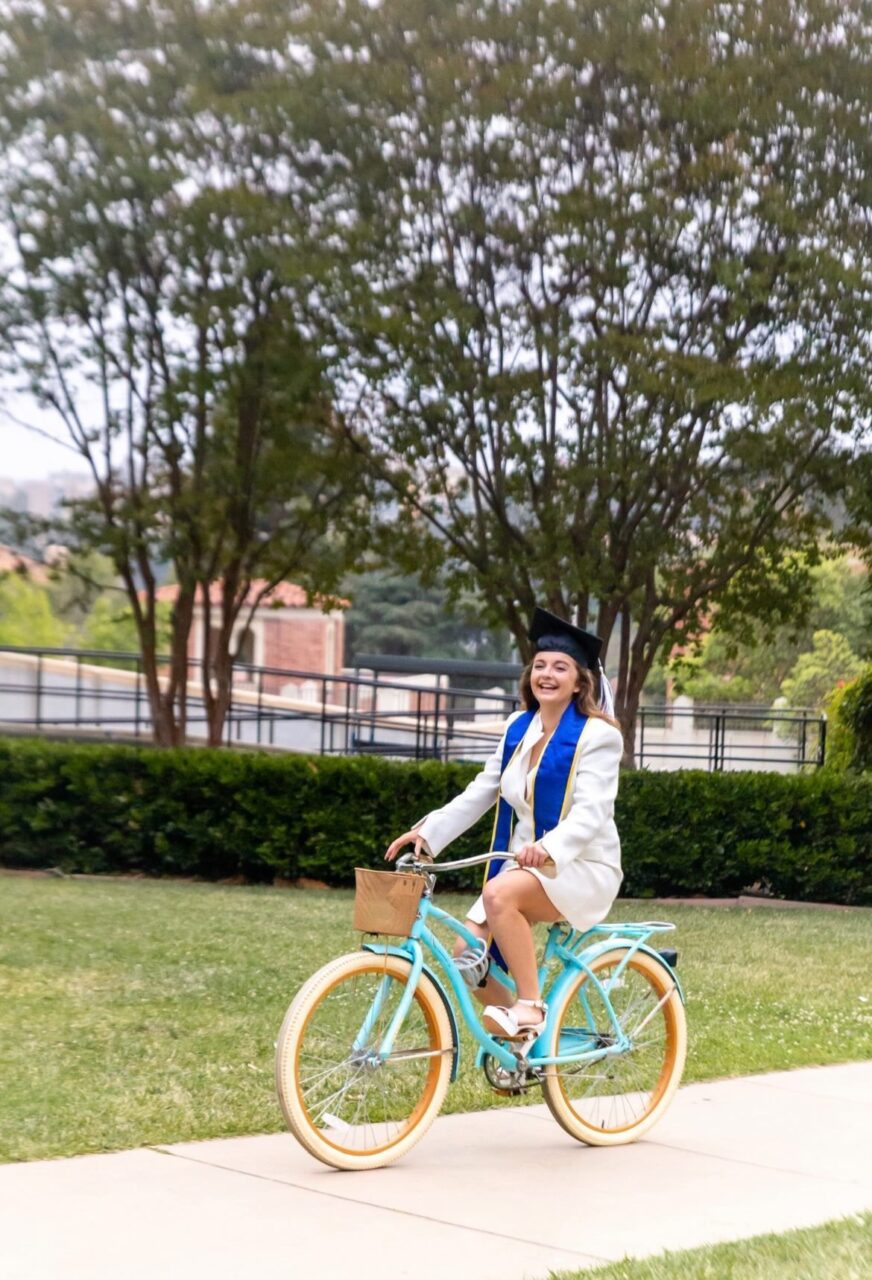by Liana Ngo
Living sustainably as a Bruin can sometimes feel overwhelming, but UCLA offers plenty of resources to help you make eco-friendly choices that are easy, affordable, and beneficial for the environment.
Whether you’re a student living on The Hill with a meal plan, or off-campus looking for fresh, local produce or need access to free groceries, UCLA has options that support a low-waste, sustainable lifestyle. Here’s a breakdown of how campus dining, the Westwood Village Farmers Market, UCLA Farmers Market, and Community Programs Office (CPO) Food Closet can help you eat sustainably.
UCLA Residential Dining Commons and On-Campus Food Outlets
Overall, UCLA food sustainability initiatives range from UCLA Dining’s page on the Carbon Footprint of Food to UC food policy and UCLA Sustainability Plan targets and progress. Across all UCLA food outlets, the percentage of spending on sustainable food options has increased, which reflects ASUCLA operations exceeding the 2030 targets significantly for sustainable and plant-based spend percentage, at 42% for each, due to an intentional focus on more sustainable purchasing on food items.
Among UCLA Dining locations, Bruin Plate is UCLA’s newest residential restaurant and offers a menu that focuses on fresh, wholesome, and nutritionally-balanced options and follows best practices of sustainability in food service operations. Bruin Plate offers food in an environment that supports “mindful eating,” encouraging you to pay attention to what you eat. Featuring whole foods that are in season, local, and all-natural is one approach that Bruin Plate takes to support food sustainability, and other approaches include:
– carefully choosing high-quality lean meats and using a greater variety of fresh vegetables
– using the healthiest cooking techniques such as grilling, roasting, baking, and poaching to capture the freshest flavors
– offering sweet bites for dessert that feature lower fat alternatives and lots of fresh fruit
Westwood Village Farmers’ Market: Fresh, Local, and Sustainable
Located in the heart of Westwood Village, the Westwood Village Farmers’ Market is a fantastic place to buy fresh, locally-grown produce and goods. Held every Thursday, this market offers a wide range of seasonal fruits, vegetables, and specialty items from local farmers and vendors. By shopping here, you’re supporting local agriculture, which reduces the environmental impact of transporting food over long distances.
In addition to produce, the market often features sustainable goods like honey, flowers, and handmade crafts. It’s also a great way to discover new ingredients or flavors, all while reducing your carbon footprint. Don’t forget to bring your own bags – whether reusable cloth or plastic and paper you’ve collected – and containers to minimize plastic waste and make your shopping trip even more sustainable.
UCLA Farmers Market: Local Food on Campus
If you’re looking for fresh food without leaving campus, the UCLA Farmers Market is the perfect solution. Organized by the UCLA Student Food Collective, this market is held several times each quarter and provides students with access to local, organic produce. The UCLA Farmers Market is a great way to eat fresh while supporting eco-friendly food systems right on campus. Many vendors at the market are committed to sustainable farming practices, so you can feel good about the impact of your food choices. Shopping at the market also supports student-led sustainability initiatives and helps create a more environmentally-conscious campus community.
CPO Food Closet and Bruin Dine: Sustainable Support for Bruins in Need
For Bruins facing food insecurity, the CPO Food Closet is an essential resource that also promotes sustainability. Located at the Student Activities Center (SAC), the food closet provides free groceries—including fresh produce and pantry staples—to any UCLA student in need.
CPO works to reduce food waste by sourcing surplus food from local stores and food drives. This not only helps students access healthy food but also prevents perfectly good food from going to waste. If you’re ever in need, the CPO Food Closet is here to help while also contributing to a more sustainable campus.
SAC is also where the student organization Bruin Dine serves leftovers from the UCLA Dining Halls for the community, three days a week (Tuesday-Thursday at 10:00 PM). For more info about Bruin Dine, visit https://basicneeds.ucla.edu/services/bruin-dine.
Tips for Sustainable Eating at UCLA
In addition to these great resources, here are a few extra tips to help you adopt sustainable eating habits on campus:
– Bring Reusable Bags and Containers: Whether shopping at a farmers market or grabbing groceries from the food pantry, using reusable bags and containers reduces single-use plastic waste. You can also keep a reusable set of utensils and cup or plate handy for whenever you are grabbing something to eat or drink!
– Cook in Bulk: Preparing meals in bulk is a cost-effective way to reduce food waste. Store leftovers in reusable containers to enjoy throughout the week.
– Focus on Plant-Based Meals: Plant-based eating is one of the most effective ways to lower your environmental impact. Try incorporating more plant-based meals into your diet, whether it’s for Meatless Monday or an everyday habit.
– Choose Seasonal Produce: Eating seasonal produce reduces the energy used to grow and transport food. Both the Westwood and UCLA Farmers Markets offer seasonal fruits and vegetables, so you can eat fresh while supporting sustainability.
With resources like ASUCLA and UCLA Dining, the Westwood and UCLA Farmers Markets, and the CPO Food Closet and Bruin Dine, UCLA makes it easier for Bruins to eat sustainably. By shopping local, reducing waste, and focusing on plant-based meals, you can enjoy fresh, healthy food while making a positive impact on the environment. Incorporating these sustainable habits into your daily life will not only benefit your health but also contribute to a greener UCLA community.
Liana Ngo is a junior cognitive science major concentrating in user experience and design.
